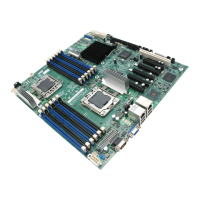VMware vSphere* 4.1 Installation Guide for ESX/ESXi* 4.1
32
vSphere* and vCenter Server*
VMware vSphere* is a suite of virtualization applications that includes ESX* and vCenter Server*. vSphere
uses virtualization to do the following tasks:
Run multiple operating systems on a single physical machine simultaneously.
Reclaim idle resources and balance workloads across multiple physical machines.
Work around hardware failures and scheduled maintenance.
vSphere includes the following components in addition to the ESX* host and vSphere Client previously
setup:
VMware vCenter Server*: vCenter Server unifies resources from individual hosts so these resources
can be shared among virtual machines in the entire datacenter. It accomplishes this by managing the
assignment of virtual machines to the hosts and the assignment of resources to the virtual machines
within a given host based on the policies that the system administrator sets. vCenter Server allows the
use of advanced vSphere features such as VMware Distributed Resource Scheduler* (DRS), VMware
High Availability* (HA), and VMware VMotion*.
Datacenter: A datacenter is a structure under which hosts and their associated virtual machines are
added to the inventory.
Virtual Machine: A virtual machine is a software computer that, like a physical computer, runs an
operating system and applications. Multiple virtual machines can run on the same host at the same time.
Virtual machines that vCenter Server* manages can also run on a cluster of hosts.
Figure 8 shows the relationships among the basic components of vSphere and how vCenter Server can be
used to manage hosts and run virtual machines.
Figure 16 – vSphere* Components

